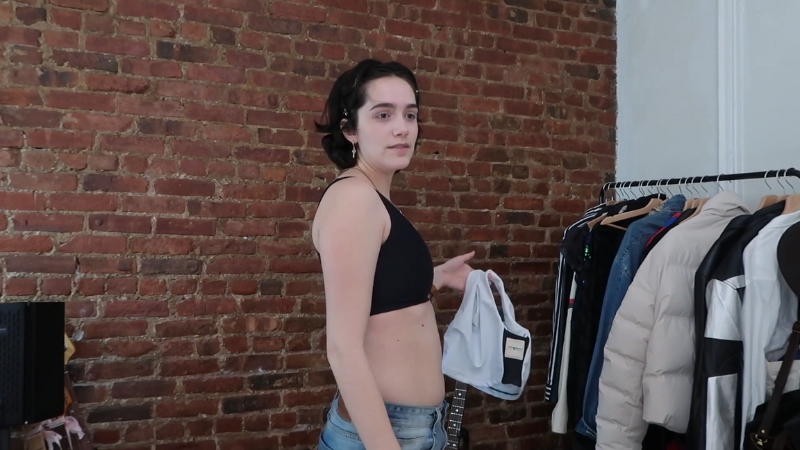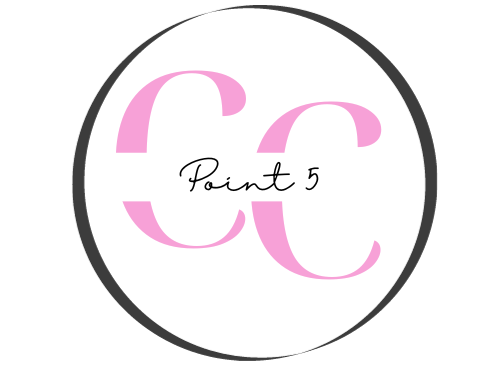Safe chest binding is possible for most body types, but it requires choosing the correct binder, using it for safe durations, and following your body’s limits.
The safest approach is to wear a properly fitted binder designed for chest compression (never tape or bandages), limit use to 8 hours per day, and take breaks to avoid circulation and breathing issues.
People with larger chests, broader rib cages, or pre-existing conditions like asthma should pay extra attention to fit, fabric, and breathing comfort.
Whether you’re binding for gender affirmation, performance, or another personal reason, the goal is to achieve the desired silhouette without harming your skin, lungs, ribs, or posture.
1. Get the Right Fit From the Start
Fit is the single biggest factor in safe binding. A binder that is too small will cause restricted breathing, rib pain, and skin irritation. One that’s too big won’t give the shape you want and may shift around or bunch up.
To get an accurate size, measure around the fullest part of your chest, directly under your chest tissue, and across your shoulders. Use the brand’s own size chart; sizing is not the same across all makers. The compression should feel snug but never sharp or suffocating.
Body Type
Measurement Tip
Binder Style
Small chest, narrow torso
Use bust + underbust
Half-length
Large chest, narrow torso
Add 1–2 inches for comfort
Full-length reinforced
Broad shoulders
Include shoulder width
Racerback
Plus-size
Bust + waist separately
Full-length stretch sides
2. Match the Binder Style to Your Needs
Half-length binders end above the stomach, stay cooler in warm weather, and work well for smaller chests. Full-length binders provide more torso smoothing and are better for larger chests or plus-size bodies, but they retain more heat.
Sports binders are designed for movement and have more stretch, which can make them safer for light activity but less effective for maximum flattening. If you want the most comfortable option for daily wear, consider rotating between styles to suit your plans and environment.
3. Stick to Safe Wear Times

Wearing a binder all day might feel tempting, especially if it boosts your confidence, but your body needs time without compression. The standard safe limit is up to 8 hours per day.
Longer wear increases the risk of reduced lung capacity, rib soreness, and posture issues.
Never wear a binder to sleep; your body needs unrestricted breathing at night. If you notice pain, shortness of breath, dizziness, or numbness in your arms, remove it immediately.
4. Choose the Right Material for Your Climate and Skin
Binders are usually made from a combination of spandex, nylon, and sometimes cotton. Higher spandex content gives more compression but traps more heat. Cotton blends are softer, breathe better, and are gentler on sensitive skin, but may offer slightly less flattening.
For hot climates or active days, a binder with mesh side panels or a moisture-wicking lining can make a big difference in comfort and safety.
Material
Benefits
Drawbacks
Cotton blend
Soft, breathable
Less firm compression
Nylon/spandex
Strong compression
Hotter, less airflow
Mesh panels
Cooling, flexible
Less coverage
5. Adjust for Larger Chests Safely

For larger chests, safe binding means choosing a binder that provides full coverage and evenly distributes compression. A full-length design with reinforced front panels can help prevent rolling at the hem and avoid creating uncomfortable pressure points.
Never layer two binders; this can severely restrict breathing and increase the risk of rib or back injury. Some people find that wearing a supportive sports bra underneath offers extra stability and reduces strain on the shoulders and back
Posture is also important; take regular moments throughout the day to stand tall, roll your shoulders back, and allow your rib cage to expand fully.
6. Consider Torso Length and Shape
Your torso length and overall body shape influence how comfortable a binder feels.
If you have a shorter torso, a half-length binder may be more comfortable because it avoids bunching around the hips. For longer torsos, a full-length binder can provide smoother coverage and prevent midsection bulging.
Plus-size wearers often find that binders with higher stretch content or adjustable side panels reduce pinching and allow easier movement.
No matter your build, be mindful of posture; binding can encourage a forward hunch, so make a habit of stretching your chest and sitting or standing with your shoulders relaxed but open.
7. Protect Your Skin While Binding
View this post on Instagram
A binder traps heat and moisture, which can lead to skin irritation, rashes, and acne over time.
Wearing a thin, moisture-wicking undershirt under the binder can help absorb sweat, reduce friction, and keep the garment cleaner. Washing your binder regularly is essential to prevent bacteria buildup, which can worsen skin problems.
After removing the binder, gently cleanse and moisturize your skin to restore comfort and elasticity. If you notice redness, chafing, or tenderness, take a break from binding and wear looser clothing until your skin has fully recovered.
8. Be Cautious When Binding During Activity
Binding limits how much your chest can expand, which can reduce oxygen intake during physical activity.
This makes high-intensity exercise like running, heavy lifting, or vigorous sports more challenging and potentially unsafe if compression is too tight. If you need to bind for a performance or active event, choose a sports-specific binder with more stretch and breathable materials.
Keep the wear time shorter on these days, and remove the binder as soon as possible after activity. Hydrate often to counteract heat buildup and sweat loss.
9. Have Alternatives for Off Days
@robyn_holdaway Replying to @breadman093 These are my personal favourite chest binders atm. This may change! Every body is different, and we all have unique needs – if you want more objective reviews, please see my binder review playlist. Thanks for your question! #ranking #review #fyp #queer #chestbinder #nonbinary ♬ Positive Vibes – Soundbeaver
Your body needs regular breaks from compression to maintain skin health, lung function, and muscle comfort. On days when you want a flatter chest but don’t need full binding, you can wear a high-compression sports bra, layer loose or structured tops, or use clothing tailored to create a minimizing effect without pressure on your ribs.
These alternatives allow your body to recover while still helping you feel confident in your appearance.
10. Watch for Warning Signs and Seek Medical Advice if Needed
Pain, bruising, swelling, or consistent breathing difficulties are not normal and should not be ignored. People with respiratory conditions or rib injuries should consult a healthcare provider before binding.
The transgender flag, created in 1999 by Monica Helms, has since become a global symbol of pride and identity for many in the community.
If issues persist even with a correctly fitted binder, explore alternative methods for chest shaping that put less stress on your body.

